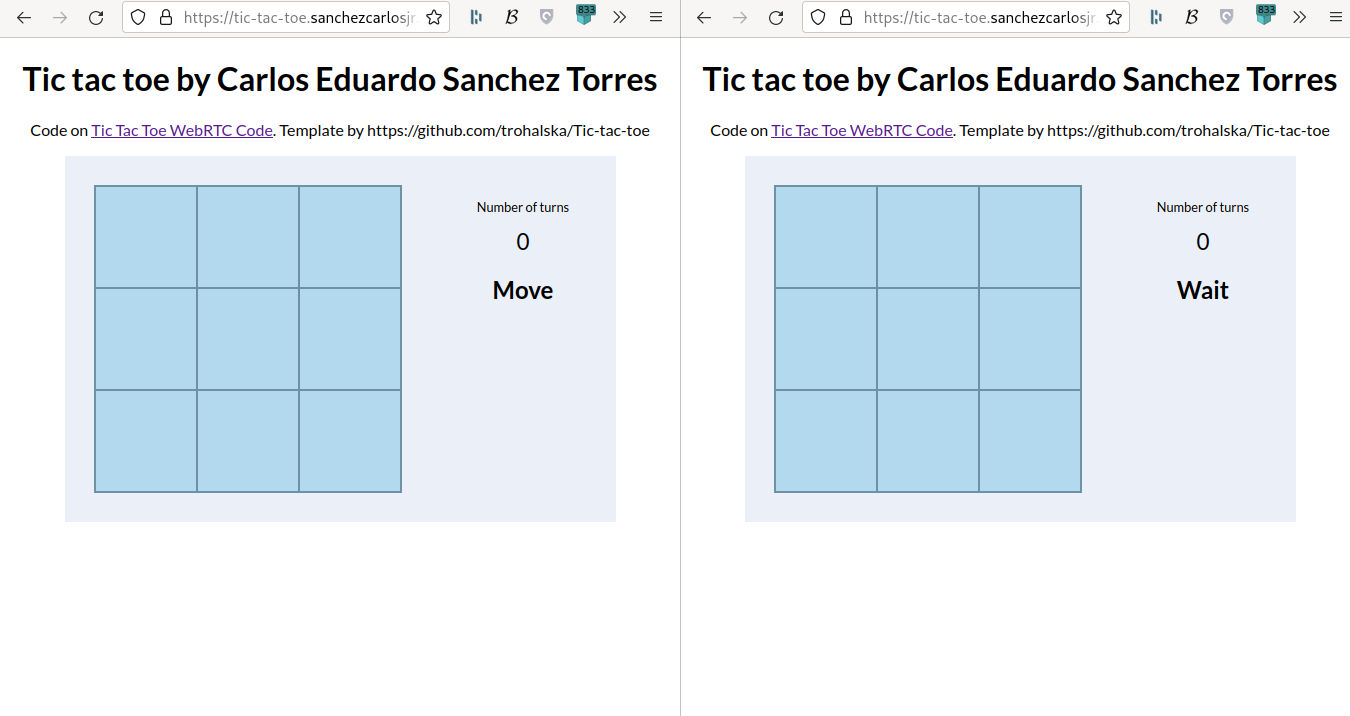
Tic-tac-toe Web on POSIX Sockets and WebRTC
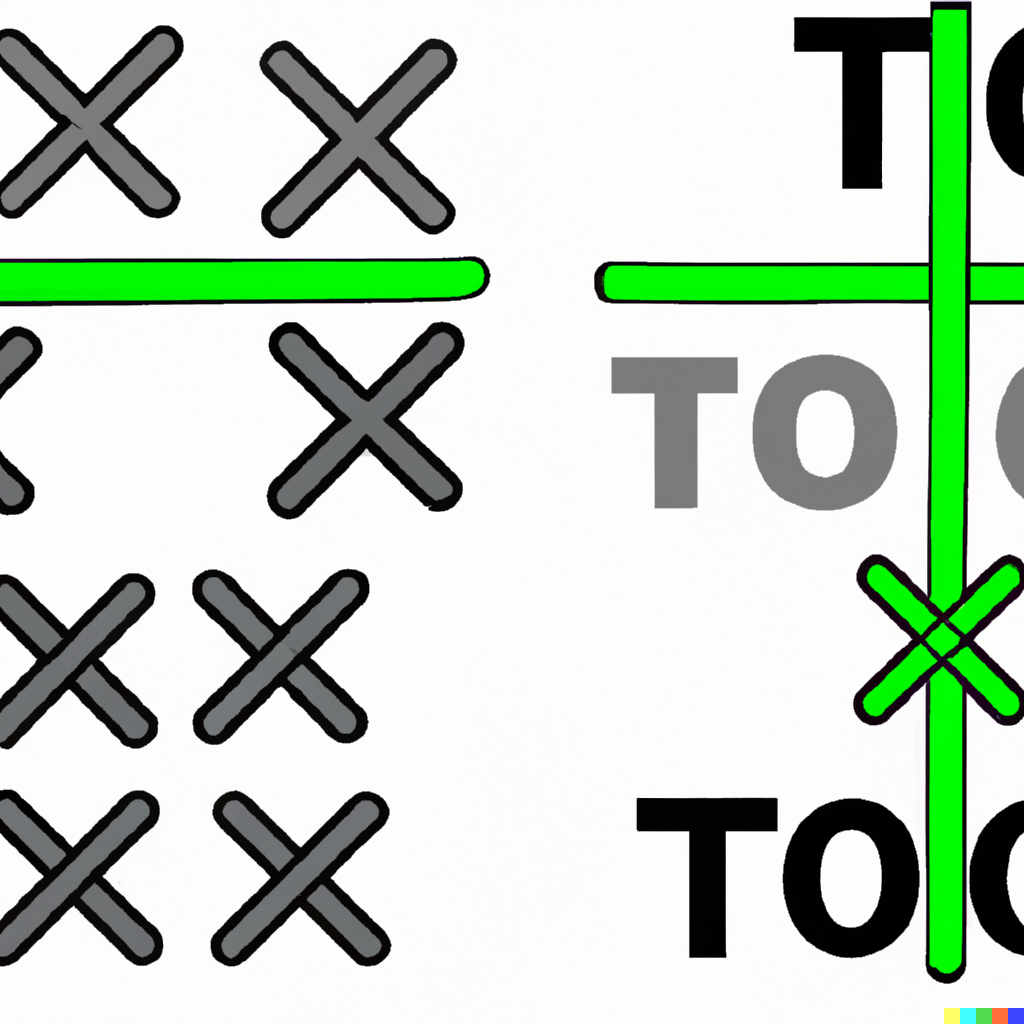
Overview
We deploy a game that works on the Web and on the Internet in order to learn Posix Sockets using C++ language.
Demo
WebSockets Demo: https://tictactoe.sanchezcarlosjr.com
WebRTC Demo: https://tic-tac-toe.sanchezcarlosjr.com/
Code & Releases
sanchezcarlosjr. (2022, October 02). operating-systems. Retrieved from https://github.com/sanchezcarlosjr/operating-systems/tree/main/tic_tac_toe_http_ipv4_sockets
Keywords
Posix Sockets, Web, Tic Tac Toe, WebSockets, Web
Introduction
Background
Send HTML through socket in c++. (2022, October 02). Retrieved from https://stackoverflow.com/questions/61936165/send-html-through-socket-in-c
Goals
- Follow Tic Tac Toe rules.
- Make an interface Console-based.
- Deploy on the Internet P2P Tunneling-based.
- Make an interface HTML-based.
- Deploy on Cloudflare Tunneling using my domain.
- Decentralized version.
Domain understanding
Design view
classDiagram
class Game
class ConsoleBoard
class Player
class LocalConsolePlayerLogic view
stateDiagram-v2
[*] --> Initializing
Initializing --> WaitingPlayerWithTurn0
WaitingPlayerWithTurn0 --> MovingPlayerWithTurn0
MovingPlayerWithTurn0 --> WaitingPlayerWithTurn1
WaitingPlayerWithTurn1 --> MovingPlayerWithTurn1
MovingPlayerWithTurn1 --> WaitingPlayerWithTurn0: reset
MovingPlayerWithTurn0 --> GameOver
MovingPlayerWithTurn1 --> GameOver
GameOver --> InitializingSequence
sequenceDiagram
Active->>Active: Moving
Pasive->>Pasive: Waiting
Active->>Pasive: Moving "row column"
Active->>Active: Waiting
Matchmaking
stateDiagram-v2
[*] --> AssignGameUUID
AssignGameUUID --> ShareUUID
ShareUUID --> ConnectToGameDesign
We follow the same states as
but we’ll change the message kind.
Layouts
Version Console
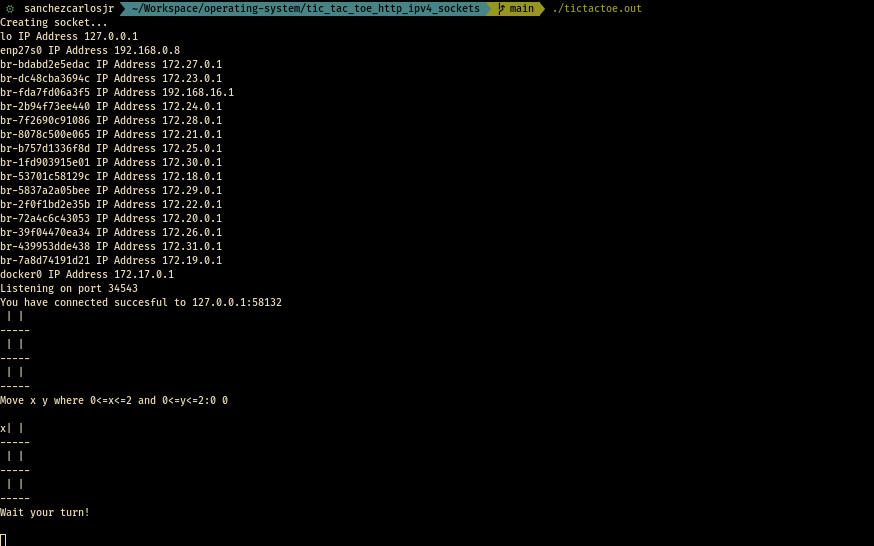
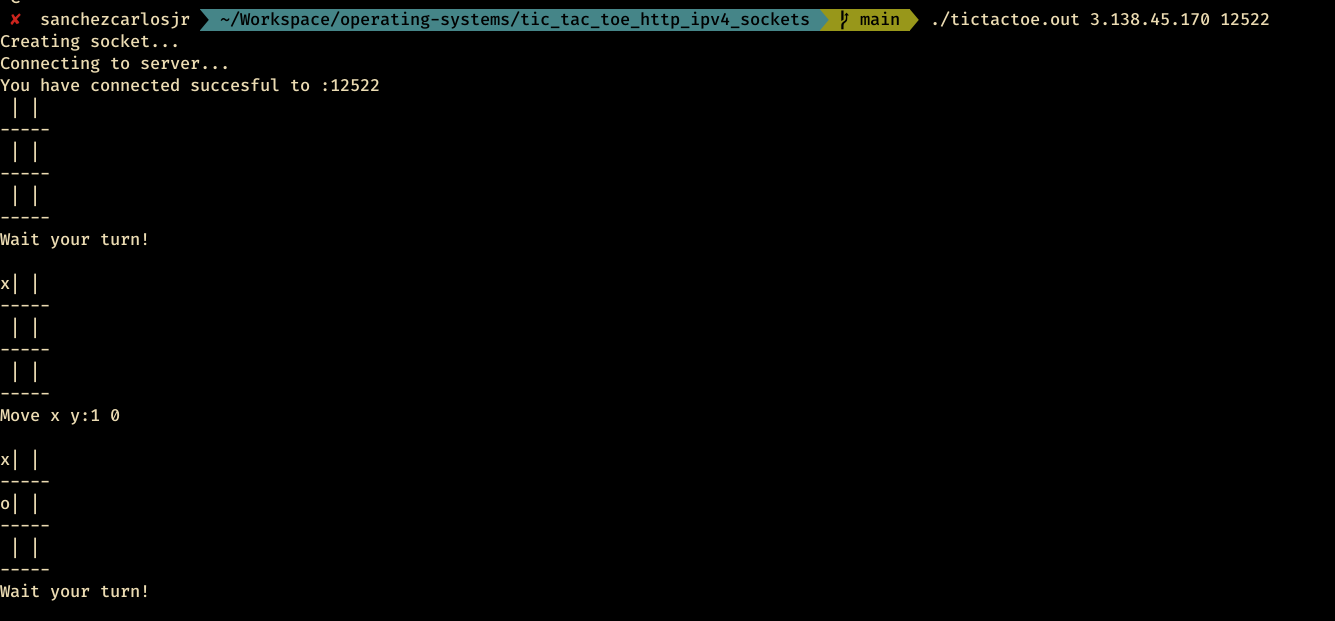
Version Web
We’ll develop with Nodejs Websockets and reuse C++ program with Queue Messaging.
HTTP/1.1 200 OK
Content-Type:text/html
Content-Length: ...
<!DOCTYPE html>...However, we do not use the terminal, our user interface is the browser instead.
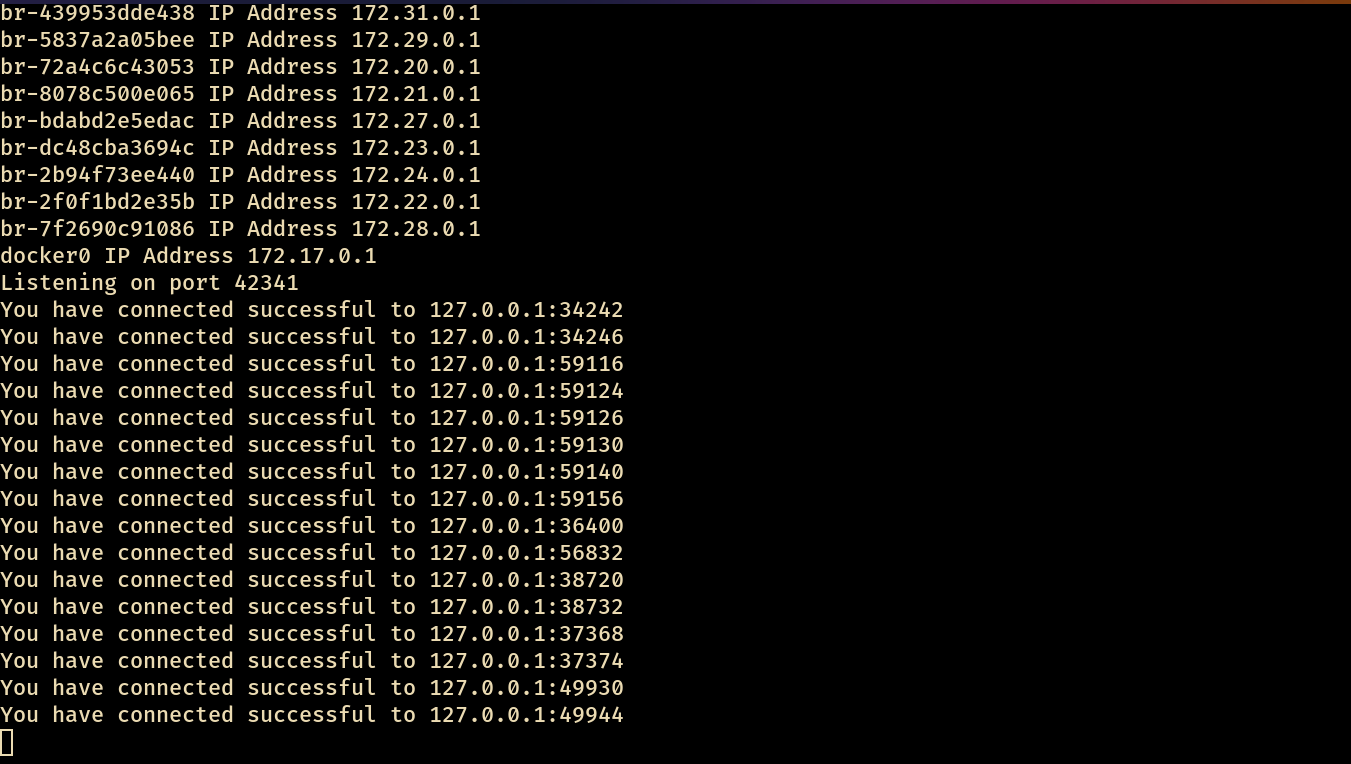
Websockets
Since we might reuse code and same time programming over Node, our app has to use Queue Messaging between C++ and node. Our standard message format is JSON.
sequenceDiagram
Users ->> Node: websocket connection
Node->>Tic Tac Toe Process: start game, make new queue and fork process
Tic Tac Toe Process->>Node: start node
Tic Tac Toe Process-->Users: queue message communication following Tic Tac Toe rules
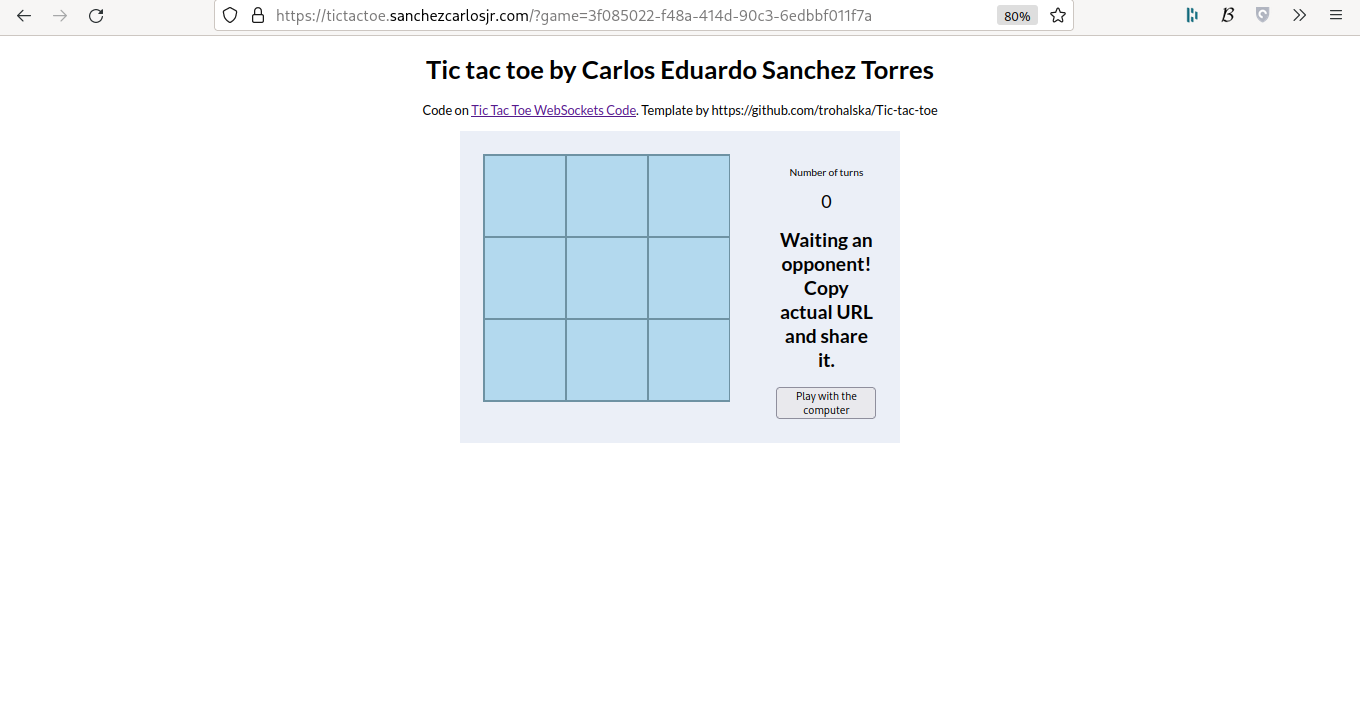
Tunneling web server
cloudflared tunnel --no-autoupdate --config ~/.cloudflared/uid.yml runNow, Cloudflare provides you with a URL on your domain, open it on your favorite browser.

Decentralization
We implement Tic Tac Toe over the Web RTC, so we don’t a server between browsers, but a signal server. We use WebAssembly to import previous domain logic and Peer.js to communicate peers.
https://github.com/sanchezcarlosjr/tic-tac-toe
https://tic-tac-toe.sanchezcarlosjr.com
User manual reference
Local (same host)
Compilation
make consoleDownload
Use
./tictactoe.outTCP
Compilation
make tcpDownload
Use
./tictactoe.out [PEER IP] [PEER PORT]Web
Compilation
make webUse
./webserver_tictactoe.out
Game
The Player 1 starts the game, so he/she must share the URL with her/his ID. By default Player 1 has the symbol X.
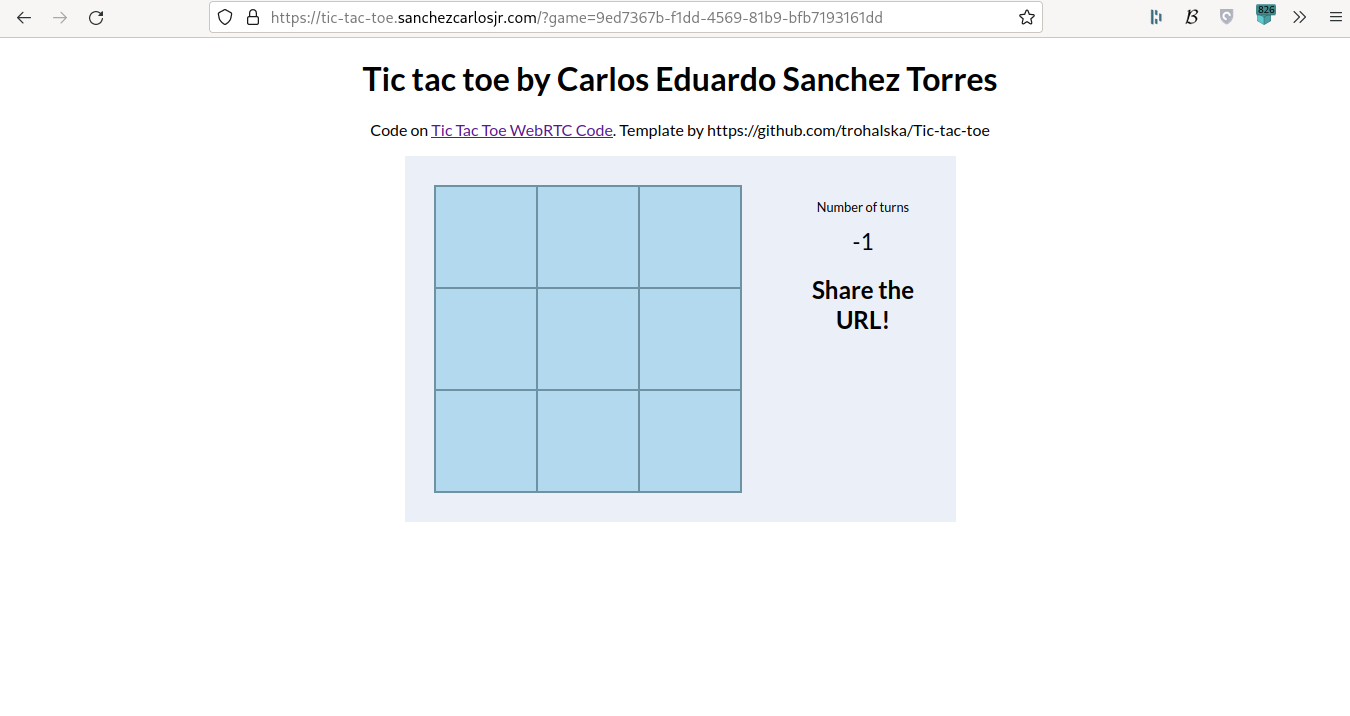
The Player 2 joins to game with the previous ID. By default Player 1 has the symbol O.
